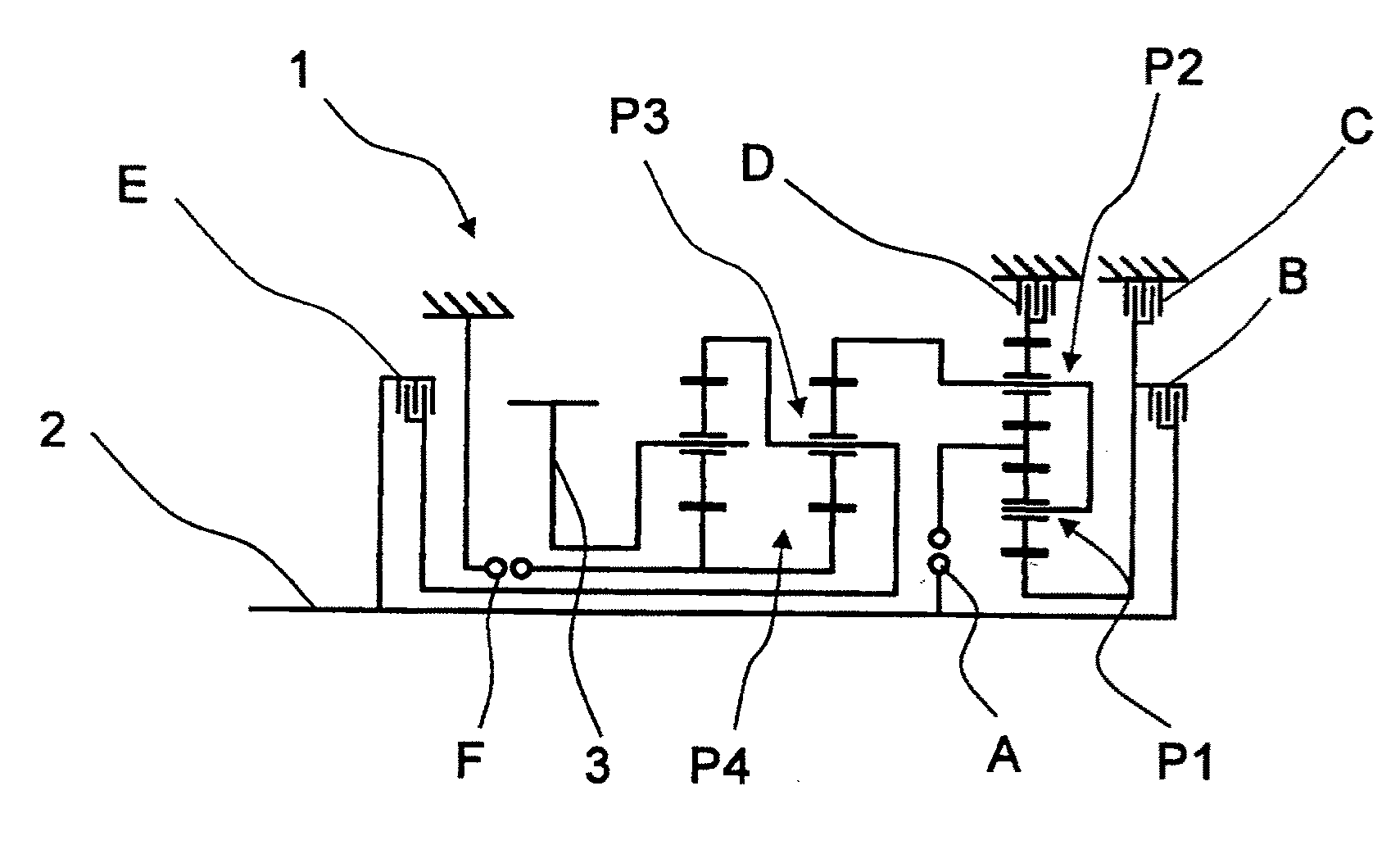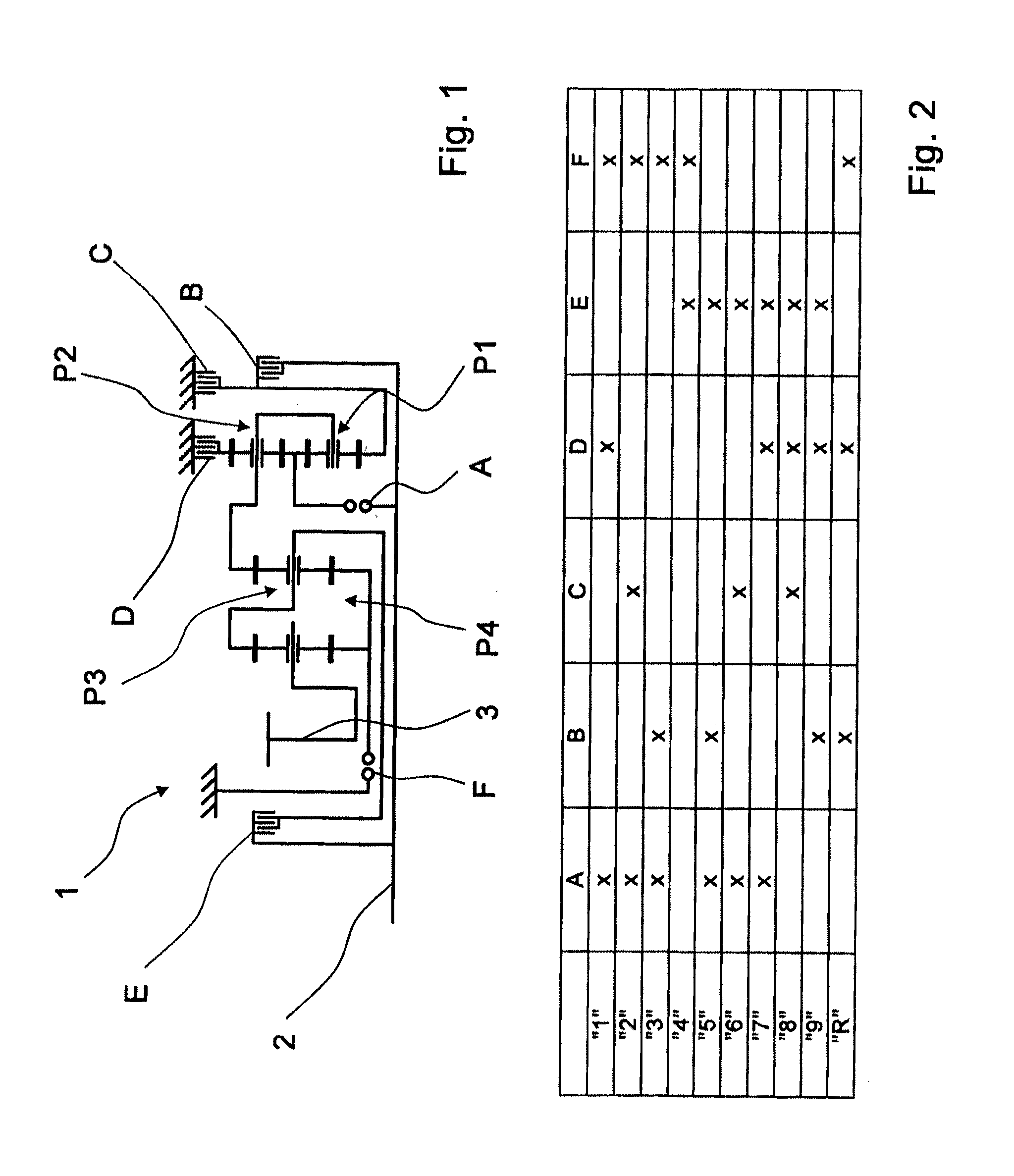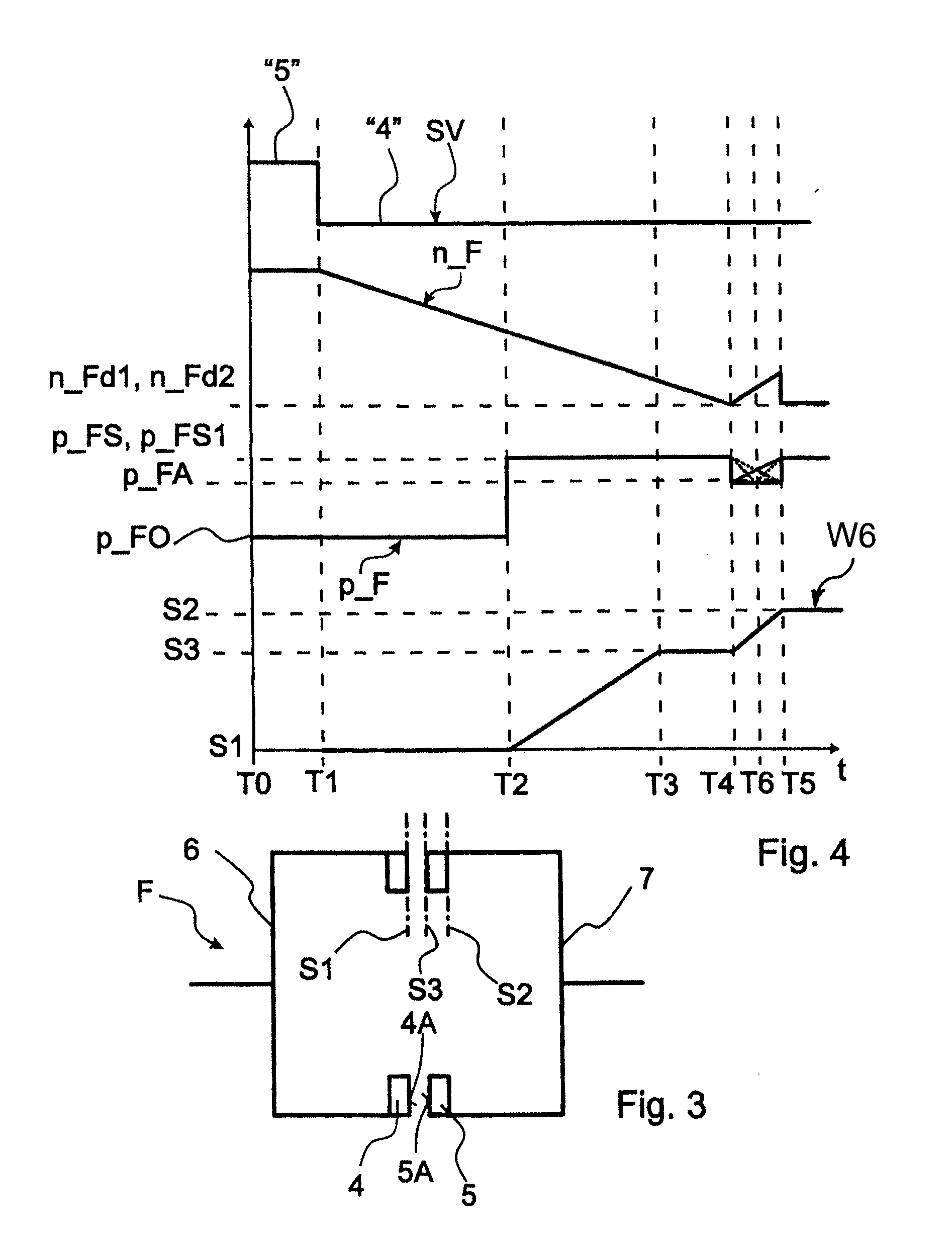Method for operating a transmission with at least one positive-locking shifting element
- Summary
- Abstract
- Description
- Claims
- Application Information
AI Technical Summary
Benefits of technology
Problems solved by technology
Method used
Image
Examples
Embodiment Construction
[0030]FIG. 1 shows a gearwheel layout of a transmission 1 or multi-stage transmission, which is basically known from the unpublished German patent application DE 10 2008 000 429.4 by the present applicant. The transmission 1 comprises a driveshaft 2 and an output shaft 3, which when fitted in a vehicle is connected to a drive output of the vehicle whereas the driveshaft 2 is actively connected to a drive machine.
[0031]In addition the transmission 1 is constructed with four planetary gearsets P1 to P4, such that the first and second planetary gearsets P1, P2, which are preferably in the form of minus planetary gearsets, form a shiftable upstream gearset while the third and fourth planetary gearsets P3, P4 constitute the main gearset. Furthermore, the transmission 1 comprises six shift elements A to F, of which the shift elements C, D, and F are brakes and the shift elements A, B and E are designed as shifting clutches.
[0032]With the shift elements A to F, in accordance with the shift...
PUM
 Login to View More
Login to View More Abstract
Description
Claims
Application Information
 Login to View More
Login to View More - R&D
- Intellectual Property
- Life Sciences
- Materials
- Tech Scout
- Unparalleled Data Quality
- Higher Quality Content
- 60% Fewer Hallucinations
Browse by: Latest US Patents, China's latest patents, Technical Efficacy Thesaurus, Application Domain, Technology Topic, Popular Technical Reports.
© 2025 PatSnap. All rights reserved.Legal|Privacy policy|Modern Slavery Act Transparency Statement|Sitemap|About US| Contact US: help@patsnap.com



